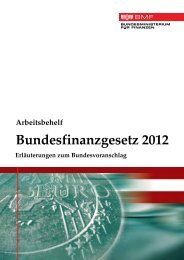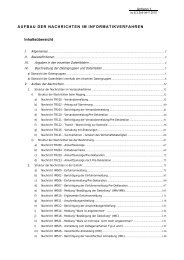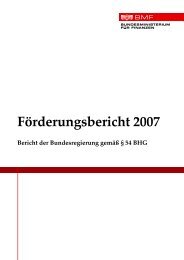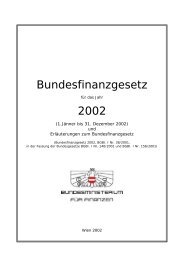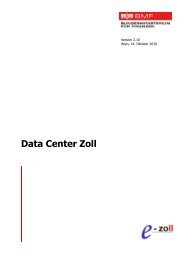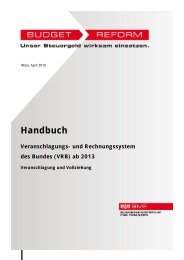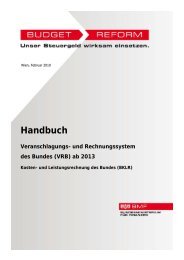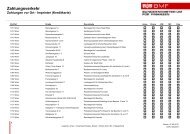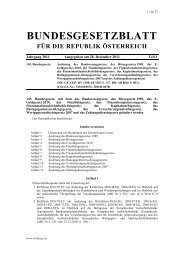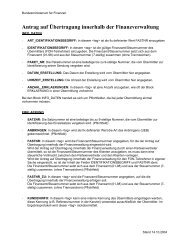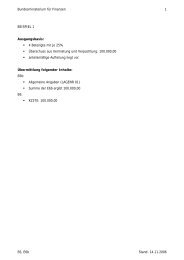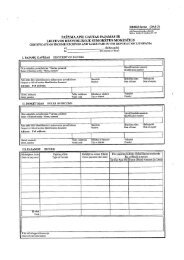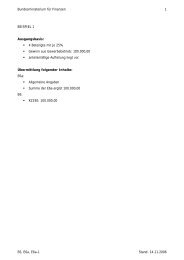Fallback and Recovery Specification (FRS)
Fallback and Recovery Specification (FRS)
Fallback and Recovery Specification (FRS)
You also want an ePaper? Increase the reach of your titles
YUMPU automatically turns print PDFs into web optimized ePapers that Google loves.
DG TAXUD – EXCISE COMPUTERISATION PROJECT REF: ECP2-FITSDEV2-SC03-<strong>FRS</strong><br />
FALLBACK AND RECOVERY SPECIFICATION (<strong>FRS</strong>) VERSION: 3.11-EN<br />
Management of data<br />
Invalid or outdated information is never deleted but marked for history purpose, including<br />
where it results from mistakes. Necessary rectification of information is limited to a part<br />
of information <strong>and</strong> is changed only through well identified ways.<br />
Rectification is required at two levels:<br />
� at entry level: when information is submitted but not yet approved <strong>and</strong> stored;<br />
� at application level: when information has been entered into EMCS <strong>and</strong>, in most cases,<br />
immediately <strong>and</strong> automatically disseminated to all concerned partners, either<br />
economic operators or MSAs.<br />
4.2.1 Rectification at entry level<br />
No information should be accepted <strong>and</strong> recorded within EMCS unless it has been<br />
submitted to a formal validation. The rules of formal validation are detailed in the<br />
description of each concerned use case.<br />
This applies both where information is submitted by an economic operator <strong>and</strong> where it is<br />
submitted by an official.<br />
MSA may find it useful to locally store a part of information they are preparing to send to<br />
their partners (for instance administrative cooperation messages); details of rectification<br />
depend on the organisation of each MSA <strong>and</strong> will have to be defined at the national level.<br />
MSAs are never allowed to rectify information of which they are not the owner; if they<br />
detect any anomaly that justifies a rectification, the MSA requires the owner of<br />
information, usually an economic operator, to perform the relevant rectification<br />
operation.<br />
4.2.2 Rectification at application level<br />
Once information has been recorded in EMCS, it should only be corrected by using<br />
defined use cases.<br />
The System specification offers a range of functions that result in the ability to update a<br />
part of information. However, some information can only be rectified by cancellation <strong>and</strong><br />
possible replacement of an e-AAD.<br />
Example 1:<br />
If, at submission time, an e-AAD is validated based on erroneous information, it is<br />
possible for the consignor to immediately cancel it (UC2.10) <strong>and</strong> resubmit the correct<br />
information (UC2.01). A new ARC is then allocated.<br />
This is possible only where the goods have not yet left the place of dispatch.<br />
Example 2:<br />
If at submission time, the consignor made a mistake when typing the excise number of<br />
the consignee, which could not be prevented by the initial checking, he may immediately<br />
issue a change of destination (UC2.05).<br />
ECP2-FITSDEV2-SC03-<strong>FRS</strong>v3.11.doc Page 25 of 53



